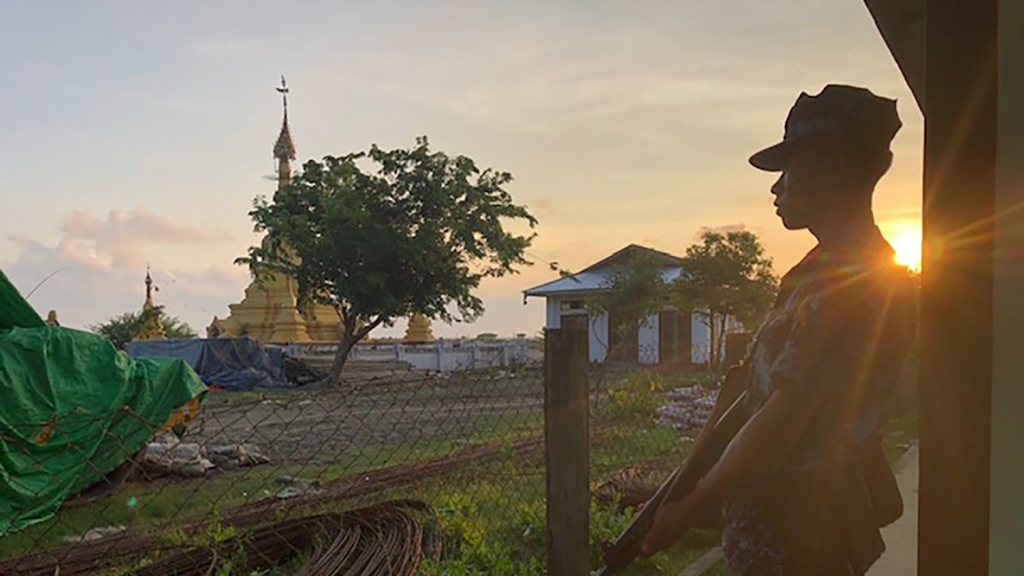
Myanmar using pandemic cover to increase attacks on minorities
- 07/05/2020
- 0
By Dr. Azeem Ibrahim, Arab News
Myanmar’s military has substantially increased its attacks on ethnic minorities over the past month-and-a-half, killing dozens of civilians in shelling and airstrikes. The military is not denying the casualties — it is merely insisting they are “collateral damage” and thus not war crimes, as Yanghee Lee, UN special rapporteur for human rights in Myanmar, stated they may be.
But we should not get bogged down in semantics, lest we risk failing to see the wood for the trees. Even if we humor the thought that what the Myanmar military claims is 100 percent true, it remains the case that the country’s leadership has decided that the global pandemic we are all focused on at the moment will likely keep the international community distracted, so it can proceed to crack down with impunity in its ongoing conflicts with the various border ethnic groups surrounding the Myanmar heartland.
Of course, we ourselves are not innocent of this kind of cynicism. The US and Russia last month blocked a UN initiative for a global cease-fire in all conflicts to focus on the pandemic response in a collective manner. But the Myanmar military might be the only global actor that is currently increasing offensive military activities. And a lot of civilians are dying as a result.
This should tell us everything we need to know about the prevailing attitude to human rights, human suffering and human well-being that dictates the decision-making at the top of the Myanmar state hierarchy. It may well be the case that the military is not bombing civilians just for the sake of bombing civilians, which would be an unambiguous war crime. But it doesn’t seem to mind much if civilians die in the course of its operations against local insurgents. And, when in doubt, bomb everything in front of you: An attitude very reminiscent of how Bashar Assad has conducted his civil war in Syria.
For her part, Aung San Suu Kyi, the leader of the civilian government in the country and Nobel Peace Prize laureate, has called for the rebels to be “crushed,” even leading to an increased military deployment of perhaps as many as 20,000, especially to the regions of Rakhine, Chin, Karen and Shan, which are seeing the heaviest fighting.
Myanmar has had to contend with various separatist groups all along its borders for decades, and in the current offensive it seems to have increased attacks against all these groups. But its main focus continues to be the Arakan Army (AA), as the group ostensibly representing the interests of the Rohingya, whom the Myanmar military has cleansed from the region over the past two years, removing as much as 70 percent of the entire population from 2016.
The military doesn’t seem to mind much if civilians die in the course of its operations against local insurgents.
Dr. Azeem Ibrahim
Naturally, the government also designated the AA a terrorist group, so it is arresting journalists who speak to the AA to report on operations and casualties. The idea here being that, if you are going to continue the last push to complete your “clearance operations” against the Rohingya under the fog of the coronavirus pandemic in the international media, you would also not want any documentary evidence that can be dug up later on by historians or the prosecutors at the International Court of Justice.
Overall, there is only one reasonable conclusion that can be drawn from the behavior of Myanmar in response to the global pandemic: It confirms that it is not satisfied with having largely cleansed the country of the Rohingya, and it will not let a crisis go to waste. The endgame seems to be, as its leaders frequently explicitly argue, a Bamar-Buddhist nationalist state. The Rohingya were the first, and they remain the focus, for now. But the Shan, the Karen, the Chin and many others are also getting a taste of what Naypyidaw has in store for them.
- Dr. Azeem Ibrahim is a director at the Center for Global Policy and author of “The Rohingyas: Inside Myanmar’s Genocide” (Hurst, 2017). Twitter: @AzeemIbrahim






